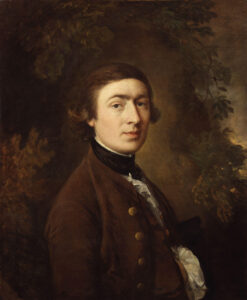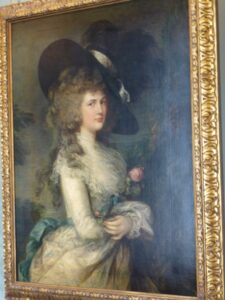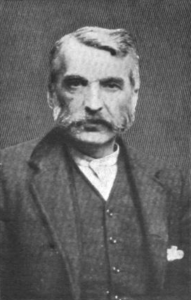 When an artist completes a painting, they really don’t know if it will bring a great price when it is auctioned off or not. They simply put forth their best work, and hope that the buyers see in the painting the same thing that they saw as they painted it. On May 6, 1876, Thomas Gainsborough found himself hoping against hope that he had created a masterpiece. This was going to be his best day ever, because his painting, Duchess of Devonshire, went beyond his greatest expectations when it sold to a London art dealer named William Agnew, for $51,540. It was the highest price ever paid for a painting at auction. My guess is that Gainsborough had a tough time breathing, and an even harder time not passing out as the bids continued to climb.
When an artist completes a painting, they really don’t know if it will bring a great price when it is auctioned off or not. They simply put forth their best work, and hope that the buyers see in the painting the same thing that they saw as they painted it. On May 6, 1876, Thomas Gainsborough found himself hoping against hope that he had created a masterpiece. This was going to be his best day ever, because his painting, Duchess of Devonshire, went beyond his greatest expectations when it sold to a London art dealer named William Agnew, for $51,540. It was the highest price ever paid for a painting at auction. My guess is that Gainsborough had a tough time breathing, and an even harder time not passing out as the bids continued to climb.
Agnew wanted that painting, and when he was triumphant in his quest, he couldn’t wait to display the painting at his gallery. So three weeks later he did just that, and the painting was promptly stolen by Adam Worth. This was not the first theft by Worth. He was quite sneaky and was later dubbed the “Napoleon of Crime” and was the person that Sir Arthur Conan Doyle eventually based Sherlock Holmes’ arch nemesis Dr Moriarty on. He stole the painting with the plan of getting enough money to pay his brother’s bail and get him out of jail. He  didn’t have the money that was needed for the release. As it turned out, his brother was freed without his help. At that point, Worth decided to keep the painting, even if he would most likely face the consequences.
didn’t have the money that was needed for the release. As it turned out, his brother was freed without his help. At that point, Worth decided to keep the painting, even if he would most likely face the consequences.
Worth “made a name for himself” as the 19th century’s most masterful criminal. Worth was born in Germany, but he was raised in the United States. He joined the Union Army in the Civil War. He was later erroneously reported killed in the Second Battle of Bull Run, but he actually spent the rest of the war hopping from one regiment to another, collecting money to join and then immediately deserting. Even then, he was not a man of integrity, but rather showed his criminal side early on. When the war ended, he made his way to New York, where he joined a gang of pickpockets. He was later convicted of robbery and sentenced to three years at Sing Sing Prison. Sing Sing couldn’t hold him, however, and after just a few weeks, Worth escaped and vowed to be more careful in the future. He began using the alias Henry Raymond and began a lucrative career robbing banks in America before deciding to take his criminal career to Europe. He began a series of perfectly planned heists, as well as a successful forgery operation. Somehow, Worth avoided all violent encounters and actually  established himself in respectable society…until the heist that would become his downfall…The Duchess of Devonshire. His big mistake came when he failed to financially reward his co-conspirators, Joe Elliot and Junka Phillips. Understandably angered when Worth refused to divulge its whereabouts, the pair went to the police. Worth was sent to prison, on other charges, since the paintings whereabouts could not be determined. Worth spent four years in prison and was released in 1897. After returning to America, he finally had a change of heart and began negotiations with the Pinkerton Detective Agency to obtain a ransom for the painting.
established himself in respectable society…until the heist that would become his downfall…The Duchess of Devonshire. His big mistake came when he failed to financially reward his co-conspirators, Joe Elliot and Junka Phillips. Understandably angered when Worth refused to divulge its whereabouts, the pair went to the police. Worth was sent to prison, on other charges, since the paintings whereabouts could not be determined. Worth spent four years in prison and was released in 1897. After returning to America, he finally had a change of heart and began negotiations with the Pinkerton Detective Agency to obtain a ransom for the painting.
After paying, a relatively small ransom, the Duchess of Devonshire was finally returned to England in 1901. Almost immediately, J P Morgan, Wall Street’s biggest financier, journeyed to England to obtain the painting for himself. Its value undisputed, it is said that Morgan paid as much as $150,000 for it. As for Worth…when he died, just a year later, he was penniless.


Leave a Reply